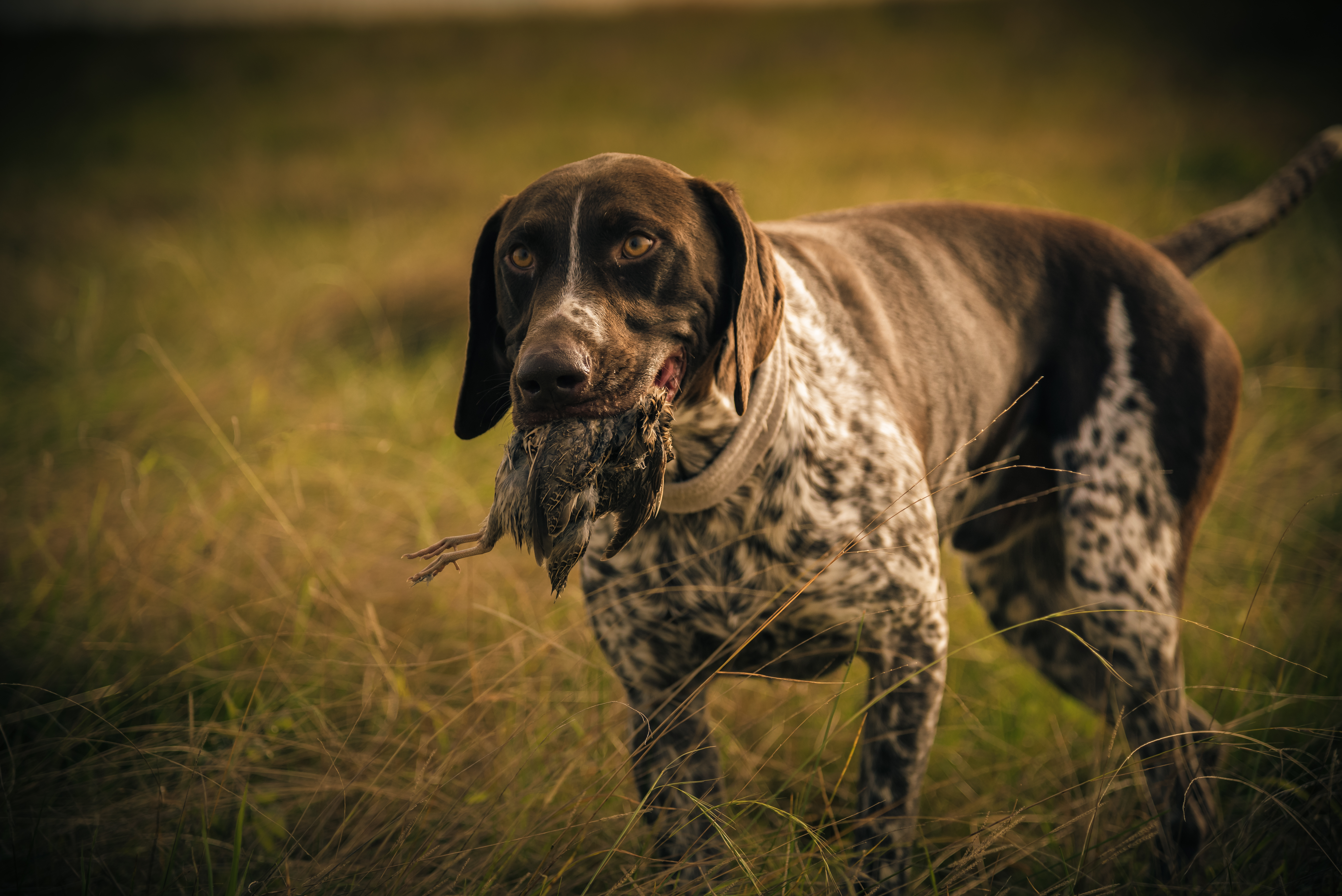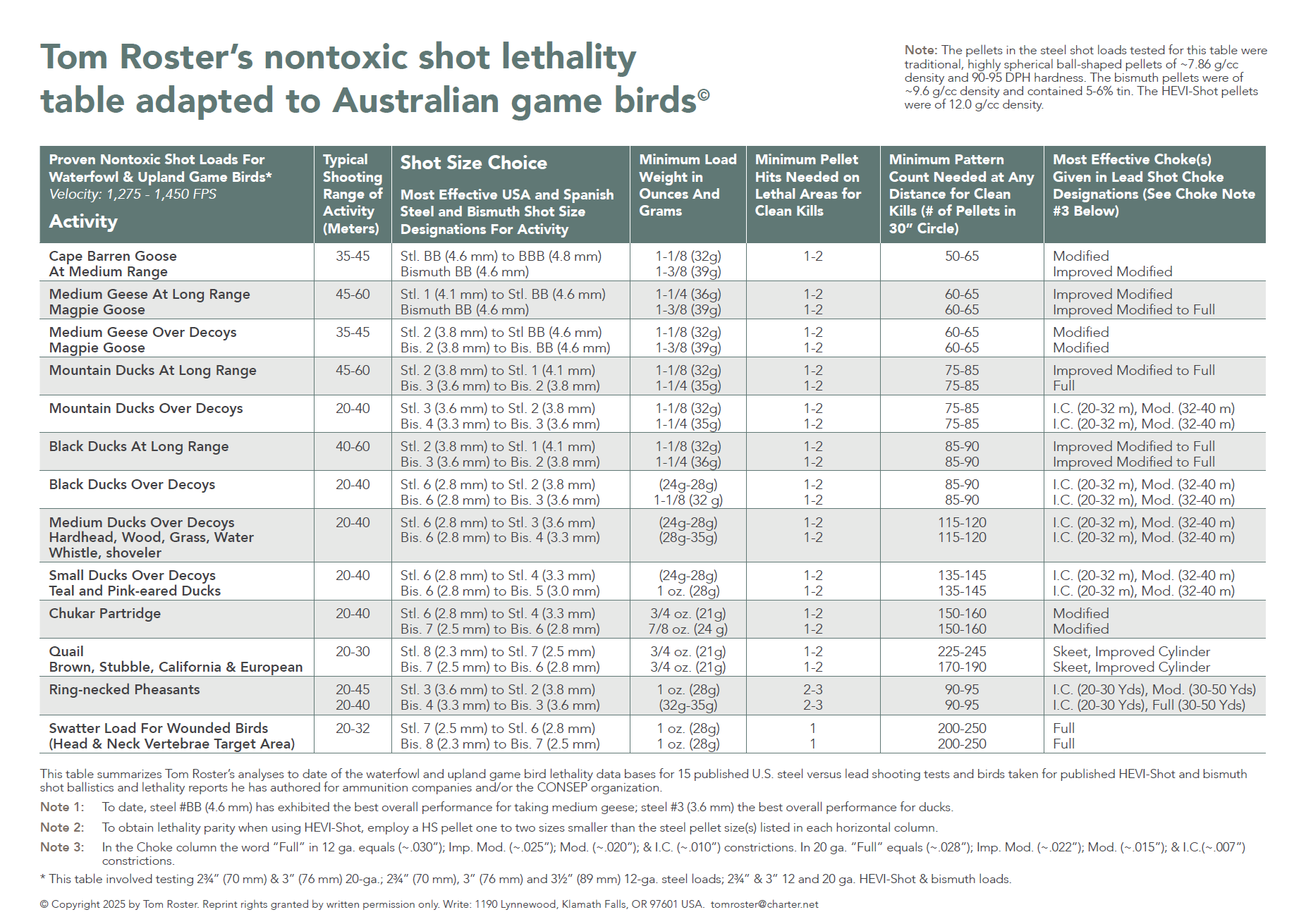Stubble Quail

The Stubble Quail is the only native species that can be legally hunted in Victoria. Approximately 150,000 Stubble Quail are harvested each year, predominantly on private property in stubble paddocks and pasture. 16 public land State Game Reserves are open to Stubble Quail hunting.
From 2025 lead shot is banned under the new Wildlife (Game) Regulations 2024.
Stubble Quail season arrangements
Open season: the season opens on the first Saturday of April and closes on the last day of June, each year. Hunting is permitted from 30 minutes before sunrise until 30 minutes after sunset throughout the season.
Bag limit: maximum 20 birds per day.
Hunting Methods: shotgun only, not exceeding 12 gauge. Lead shot is prohibited for all game bird hunting, including for Stubble Quail. Hunters are required to use non-toxic shot only. Non-toxic shot options are listed in Schedule 6 of the Wildlife (Game) Regulations 2024.
Gundogs may be used to assist in hunting Stubble Quail.
The use of electronic quail callers is not permitted.
The GMA commissioned research into the effectiveness of electronic quail callers , in response to concerns from the hunting community that the use of quail callers was not consistent with the concept of ‘fair chase’. The research found that their use concentrated Stubble Quail into a very localised area around the caller. Given these results, if their use becomes widespread, this may run the risk of the species being overharvested.
There are significant penalties for hunters who fail to comply with the law. The maximum penalty for using an electronic quail caller is 20 penalty units (approximately $4,000). If found guilty, offenders could receive a fine and lose their Game and/or Firearms licences, and any equipment used in the commission of the offence.
The GMA patrols both public lands and private properties across Victoria to ensure compliance with hunting laws.
Hunters and members of the public are urged to report illegal quail hunting to the GMA through the online form or by calling 136 186. If you have immediate concerns for your safety or the safety of others, call 000.
Given how effective quail callers are, their use could pose the risk of overharvesting if it became widespread. Quail callers could contribute to less skilled hunters being more successful than they would without a quail caller, already skilled hunters may achieve a higher harvest and some hunters may be encouraged to exceed the current legal daily bag limit. Any of these outcomes could contribute to excessive harvesting. As we have limited data on the Stubble Quail population in Victoria, any increase to harvest levels as a result of quail callers could lead to overharvesting. Electronic callers have been banned in many parts of the world for hunting gamebirds due to the risk they pose to overharvesting, in addition to being inconsistent with ‘fair chase’ hunting.
Stubble Quail (Male) Stubble Quail (Female) | Plains-wanderer(Female) Plains-wanderer(Male) |
Stubble Quail (Coturnix pectoralis)
All native quail species are protected in Victoria and, with the exception of the Stubble Quail, may not be hunted.
Stubble Quail have a dark brown colouration with pale buff markings. The centre of each feather has a cream stripe, giving the feathers a streaked appearance. The adult Stubble Quail is 18 to 18.5 cm in length, with the female slightly larger than the male.
Plains-wanderer
The threatened Plains-wanderer, a separate species that sometimes resembles a quail, also occurs in Victoria and is fully protected.
The Plains-wanderer is a small ground-dwelling bird found in north-western and central Victoria, especially around Mitiamo. The species was formerly much more abundant and widespread, however, changes to agricultural and pastoral practices have eliminated the bird from many areas, reducing its range.
In Victoria, the Plains-wanderer is considered to be critically endangered and is listed as threatened under the Flora and Fauna Guarantee Act 1988. Should factors causing their decline continue, it could become extinct. The Plains-wanderer is a plump, tailless bird with brown plumage, straw-yellow legs and is sometimes mistaken for a quail. The Plains-wanderer inhabits sparse native grasslands, old stubble and grazed pasture.
Plains-wanderers are fully protected in Victoria and must not be shot. Although hunting is not regarded as a threatening process, hunters should be aware that Plains-wanderers may be present in their hunting area.
How to recognise the Plains-wanderer
The Stubble Quail and Plains-wanderer show distinctively different flight characteristics which can be used to distinguish birds in the field. Stubble Quail flush with a loud whirring of wings at a shallow angle to the ground, fly straight, far and fast, just above cover, twisting slightly then dropping tail-down into cover. The Plains-wanderer has a laboured, fluttering flight and often its long, yellow legs can be seen trailing behind, in much the same fashion as a coot.
Non-game quail
When hunting, you may encounter several other quail species that could be mistaken for the Stubble Quail. Those most commonly encountered include: Brown Quail; King Quail; Painted Button Quail; and Little Button Quail. These birds are protected all year and may not be hunted.
Distinguishing between Stubble Quail and non-game quail
It is important that hunters can readily distinguish between Stubble Quail and protected quail species while hunting. You should pay particular attention to: the size and flight characteristics of the bird; the habitat that you are hunting in; and the social organisation of the birds. Below is a general description that can be used by hunters as a guide to recognising the differences between the Stubble Quail and non-game quail species. Remember, if you are not sure, DON'T SHOOT.
Stubble Quail | Non-game quail-like birds |
|---|---|
Large, plump bird (compared to other native quail species). | Generally smaller than Stubble Quail (except Brown Quail which is slightly larger). |
Bold, pale streaks on shoulder, back and breast. | Uniformly darker wings (King, Brown, Little Button). |
Prefer open grasslands (improved and natural), cereal crops, stubble, lucerne and often found along weedy margins of irrigation channels. Avoid woodlands or areas with many trees. | Found across a range of habitat types including: woodlands; rank, dense grasslands; swampy coastal heaths; bracken; scrublands; grassy forests. |
Mostly found singly or in pairs and, occasionally, small groups. | Often found in small groups or coveys (Brown Quail may be found in groups of up to thirty birds). |
Never vocalise (call) when flushed. | Often chirp or chatter when flushed. |
Loud whirring of wings when flushed. Fly with fast wing beats and may travel as far as 500 metres. | Quieter wing beats, not as rapid. Often fly only a short distance. |
Never glide when flying. Curved flight before dropping tail-down into cover. | Glide in flight (Brown, King) may drop head-first into cover (Brown). |
.
Lethality Table
Tom Roster’s Nontoxic Shot Lethality Table Adapted to Australian Game Birds provides important, evidence-based guidance on shot size, choke and load selections to effectively harvest Australian game birds. The Table provides minimum pattern counts (i.e. the number of pellets in a 30-inch circle) needed to achieve clean kills. This information is critical when pattern testing to select the best choke and load combinations for a shotgun.
Tom Roster’s Nontoxic Shot Lethality Table Adapted to Australian Game Birds summarises Tom Roster’s analyses at the time of publication of the waterfowl and upland game bird lethality data bases for 15 published U.S. steel versus lead shooting tests. It also includes birds taken for published HEVI-Shot and bismuth shot ballistics, and lethality reports he has authored for ammunition companies and/or the CONSEP organisation.
Understanding your equipment and how it performs is critical to being a responsible gamebird hunter. With the most effective load and choke combination and regular practice, you’ll be more successful in the field and REDUCE Wounding.
Note: Bismuth shot sizes for quail are the smallest bismuth pellets currently manufactured.
